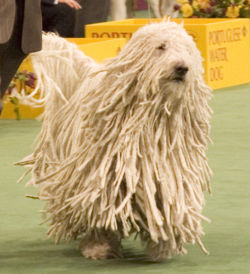
By Ruthie Bently
As your pet ages, they may get a little gray around the muzzle, and may walk slower on your daily ramblings. They might prefer sitting on the couch to going out and chasing a ball, and they may even get a bit finicky. Now our pets are even coping with some of the diseases we have been dealing with. Cognitive Dysfunction Syndrome is one of these; it has been compared to Alzheimer’s, dementia or senility in a human. Also known as Canine Cognitive Dysfunction (though cats can suffer from it as well), it’s caused by the physiological and chemical changes that occur in a dog’s brain as they age.
Canine Cognitive Dysfunction Syndrome typically comes on slowly and will gradually get worse. CDS can cause a senior dog to become forgetful or confused about their outside boundaries and even housebreaking. Another symptom is forgetfulness about eating or drinking water. This can be a problem for our senior canines because their bodies do not have a lot of reserves. If you think your dog may have CDS and they seem to be forgetful about eating regularly or seem to have lost interest, it is important to get them to the vet as soon as you can. CDS can become life threatening if not addressed.
A dog with CDS may forget their owner, favorite family member or someone they have just met. They may not meet you at the door when you come home as they used to do. They may walk away while being petted or groomed before you are finished, and they don’t tend to seek out the companionship of human family members. They may even forget other pets they live with or animals they have just met. A dog with CDS can have a personality change, and an outgoing dog may become aggressive or fearful of family members, strange people and other animals.
A dog with CDS can become disoriented in a place that has been familiar for years; this can include your yard or the house. They can even get lost in the corner of a room or behind an open door. They may wander aimlessly or pace through the house without realizing they are doing it. They may begin to bark for no reason and their sleeping patterns will change drastically. They may begin sleeping more during the day and wander the house at night. They may not respond when their name is called or may forget it altogether. Your previously housebroken or obedience-trained dog will forget what they are supposed to do. They won’t remember to tell you they have to go out, or will forget that they even have to.
The FDA has approved the drug Anipryl® for veterinarians to use in improving symptoms and slowing the process of CDS. The human equivalent selegiline hydrochloride is used for patients that are battling Alzheimer’s. While there are alternative therapies that are mentioned in the treatment of human Alzheimer’s, it is cited that there is no conclusive evidence that they work. They can be costly, are not well regulated and as such may not be a safe alternative to chemical medications. As such, Anipryl is the only medication available to help our canine pets with CDS at the present time.
If your dog is diagnosed with Canine Cognitive Dysfunction Syndrome, there are several things you can do to help them. Make sure to go to the vet for regular yearly visits. Keep your dog’s mind and body active by working or training them daily. Teach them tricks or new activities like tracking or scent training. There are many puzzle toys available today that challenge a dog’s mind. Even a simple game of hide-and-seek with a food baited toy will challenge their brain function. Adding more enrichment to your dog’s daily life can help their mental attitude and overall outlook. A dog that is both mentally and physically healthy tends to be more confident and self-assured, and have fewer health issues. By doing these things you can help slow the progress of CDS.
Read more articles by Ruthie Bently























